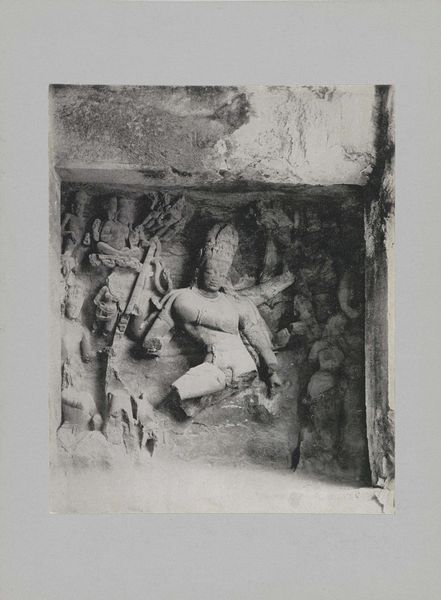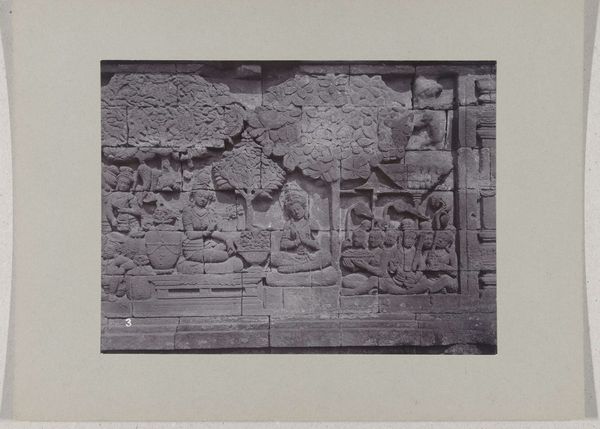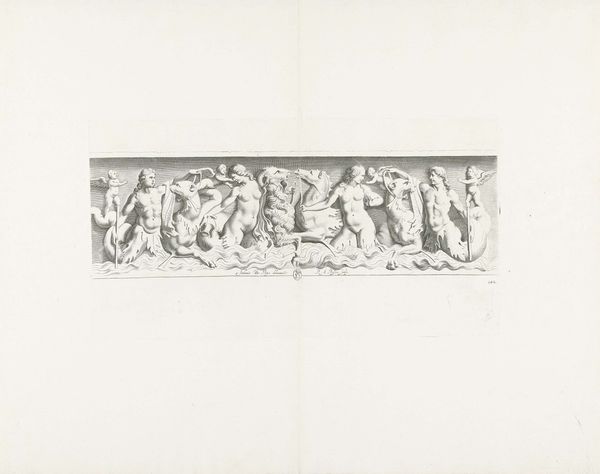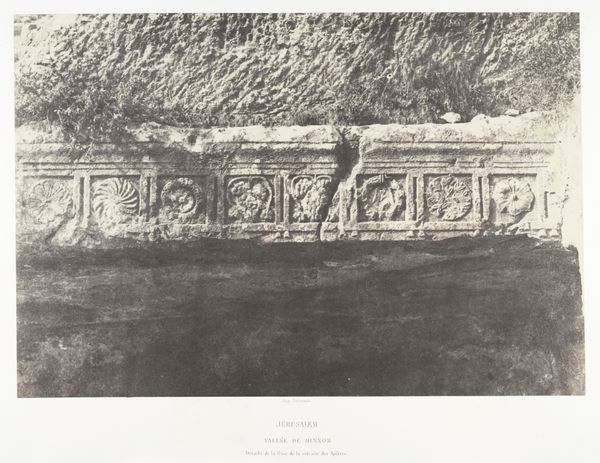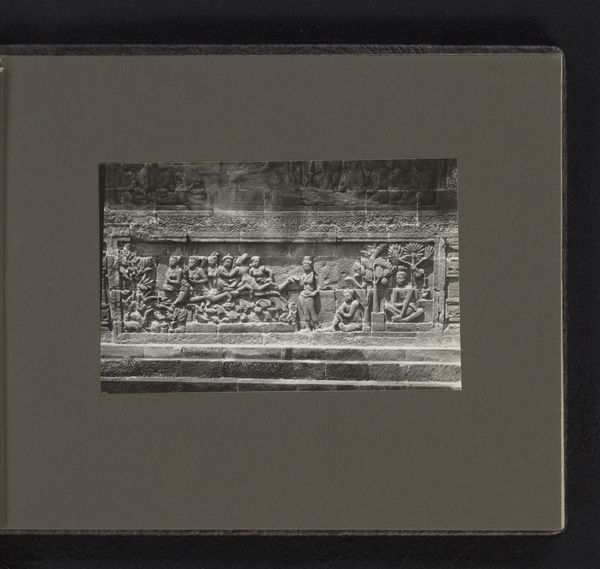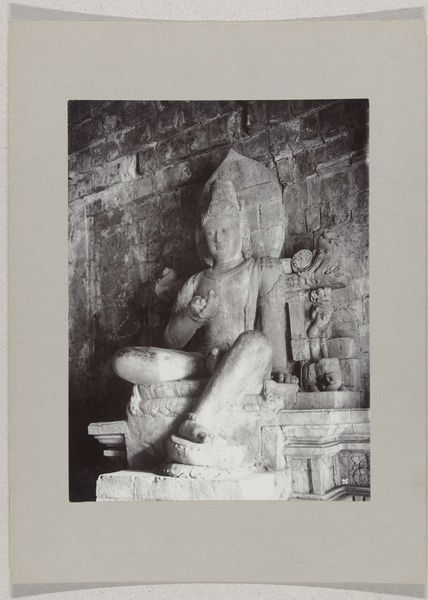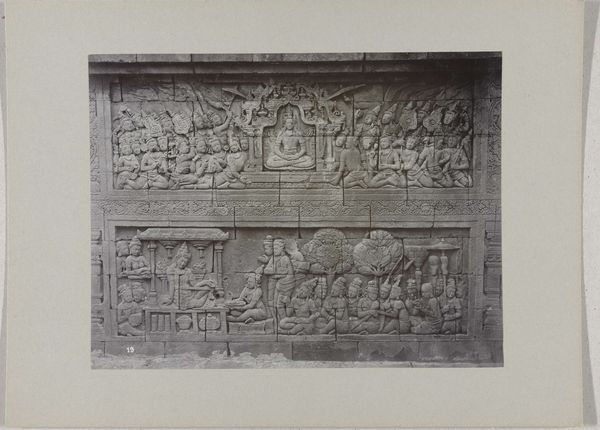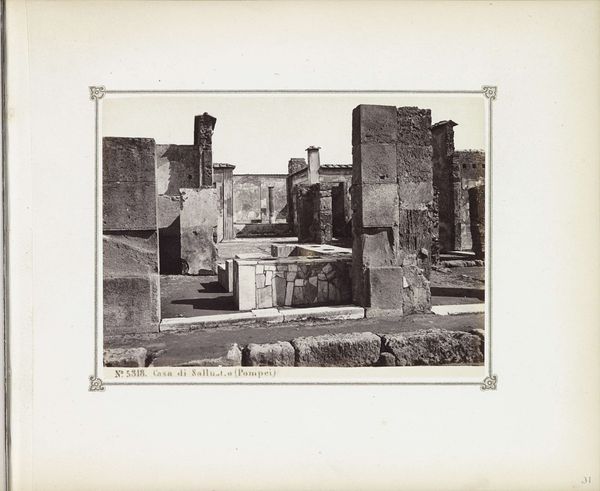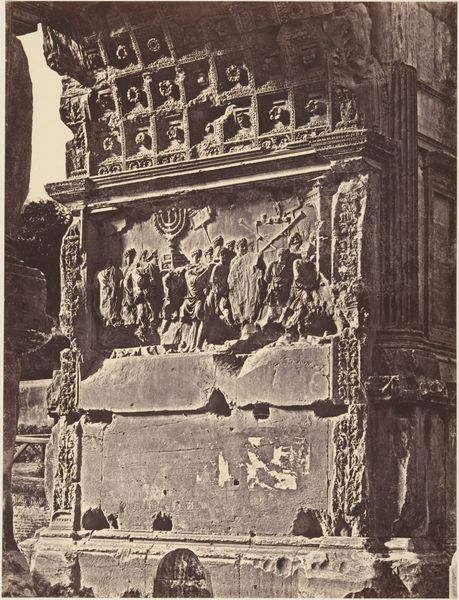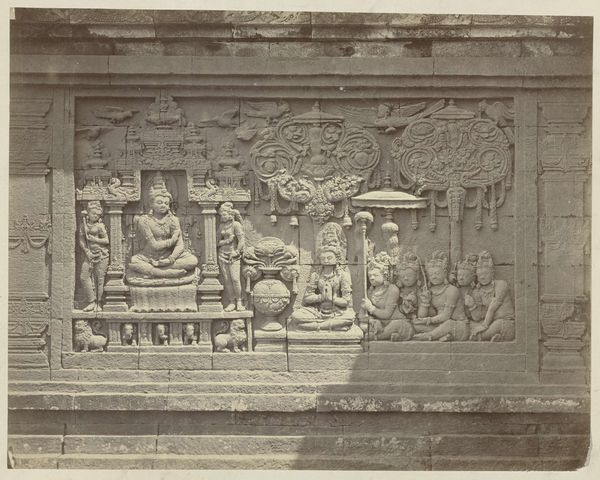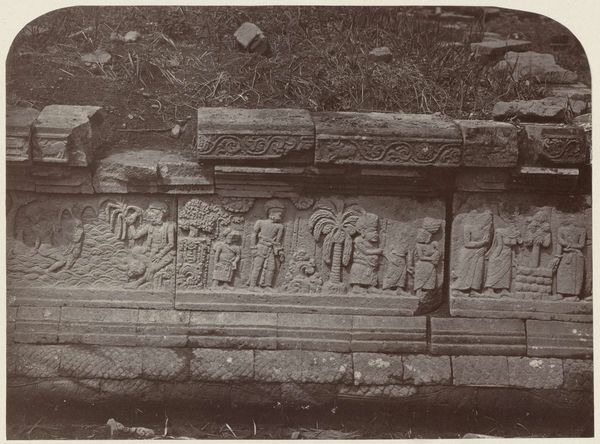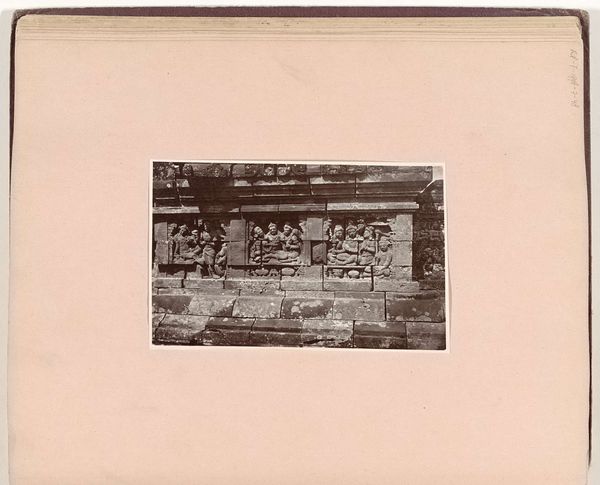
Reliëf van de Borobudur (Boroboedoer), nabij Magelang, Nederlands-Indië c. 1895 - 1915
0:00
0:00
relief, photography, sculpture
#
narrative-art
#
sculpture
#
asian-art
#
relief
#
photography
#
ancient-mediterranean
#
sculpture
Dimensions: height 169 mm, width 237 mm, height 243 mm, width 329 mm
Copyright: Rijks Museum: Open Domain
Curator: Here we have a photograph, probably dating from around 1895 to 1915, showing a relief from Borobudur near Magelang in the former Dutch East Indies. It’s attributed to Onnes Kurkdjian. Editor: What strikes me immediately is the contrast—the dense, almost claustrophobic carving against the stark flatness of the photographic paper. The light seems to be fighting to reveal the details within. It's materially heavy yet conceptually distant. Curator: It does capture a fascinating duality. These reliefs, part of the larger Borobudur structure, were deliberately designed to tell stories. Narratives central to Buddhist cosmology, aiming to instruct pilgrims visually and spiritually. The layered carvings create a world pregnant with symbolic meaning, each figure, each gesture. Editor: And speaking of pilgrims, think of the hands that carved this stone, the labor, the tools, and the sheer physical effort. Consider also the colonial context; this image was captured in a time when Western eyes were “discovering” and documenting Southeast Asian cultural heritage, claiming access and control in ways we now deeply question. Who had the power in those interactions? Curator: Absolutely. The cultural weight here is significant. Borobudur itself acts as a mandala. Each relief contains motifs which deepen meaning depending on the viewer’s place along their spiritual journey; for example, the journey from worldly desire towards enlightenment. See the recurring presence of the lotus—a constant visual reminder. Editor: I'm really interested in that colonial encounter though, to be honest: consider the circulation of images like these in Europe. How much was about genuinely understanding this ancient monument, and how much was a reinforcement of orientalist fantasies and justifying political power. It changes the object’s meaning drastically when framed in that historical transaction, and impacts the means in which the reliefs came to light and subsequently became disseminated. Curator: Precisely, those historical threads add critical layers to our interpretation today. They require us to confront both the monument's original intent and the legacy of its re-discovery and photographic capture. Editor: Understanding the circumstances surrounding the relief’s photographic record alongside its sculptural form opens so much history. We can understand it better.
Comments
No comments
Be the first to comment and join the conversation on the ultimate creative platform.
